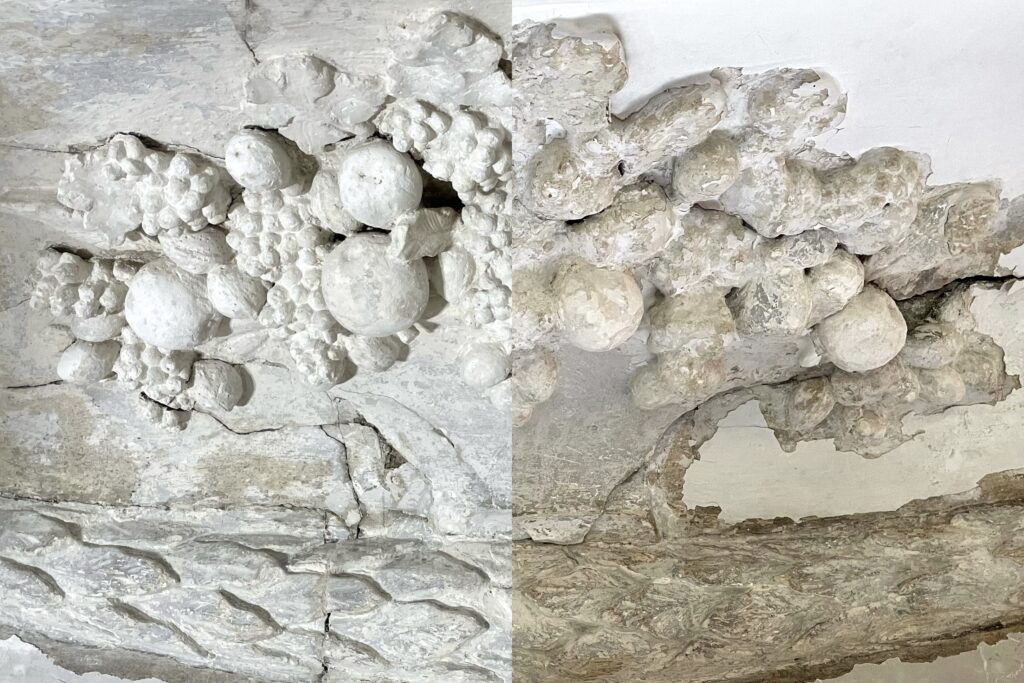Sargvere mõisa peahoone saali lage ehib rikkalik stukk-kompositsioon, mis on üks ainulaadsemaid Eestis. Stukkdekoori väljapuhastamiste käigus alanud diskussioon viis autentsust ja esteetikat puudutavate küsimusteni. Tavaliselt jääb stukkide konserveerimise tulemusena dominantseks restauraatori töö, mitte ajalooline ja peentunnetuslik meistritöö, ning vastavas säilivussituatsioonis mateeria. Lõputöö eesmärk on stukis kasutatud materjalide ajaloo ja selle võimalikke terminoloogiliste erinevuste uurimine ning stukkide konserveerimise analüüsimine eri väärtusteooriate kontekstis. Juhtumiuuring tugineb praktilisele osale Sargvere mõisas, Eesti Rüütelkonna hoones ja Estonia pst 7/ Teatri väljak 1 hoones. Lõputöö viimases osas pakun kontseptsiooni Sargvere mõisa lae stukkdekoori viimistlemiseks ja eksponeerimiseks.
The ceiling of the hall of the main building of Sargevere manor is decorated with a rich stucco composition, which is one of the most unique in Estonia. The discussion that started during the cleaning of the stucco decor led to questions about authenticity and aesthetics. Usually, as a result of stucco conservation, the work of the restorer remains dominant, not the historical and sensitive masterwork, and the material in the corresponding conservation situation. The aim of the final project is to study the history of the materials used in stucco and its possible terminological differences, and to analyze the conservation of stucco in the context of different value theories. The case study is based on the practical part in the Sargvere Manor, the Eesti Rüütelkonna building and the Estonia pst 7/Teatri väljak 1 building. In the last part of the final project, I propose a concept for finishing and exhibiting the stucco decor of the ceiling of Sargvere Manor.








